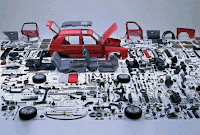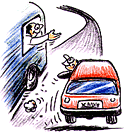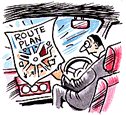Parts of an automobile

Parts of an automobile The automobile as ‘a four-wheeled automotive vehicle designed primarily for passenger transportation and commonly propelled by an internal-combustion engine using a volatile fuel’. A regular automobile roughly comprises of 14,000 parts that are again divisible into other structural and mechanical subsystems. The first in this list is the body of the automobile. It contains the passenger and storage space and the engine compartment. It is further classified according to the number of doors and the type of roof it has (e.g., two-door hardtop) and is made of molded steel, which is painted and treated to retard corrosion. The body rests upon the chassis, which is a steel frame that supports the engine, wheels, axle assemblies, transmission, steering mechanism, brakes, and suspension members. Most vehicles use the internal combustion gasoline engine with reciprocating pistons and a four-stroke cycle. A transmission includes shafts, gears and a clut



